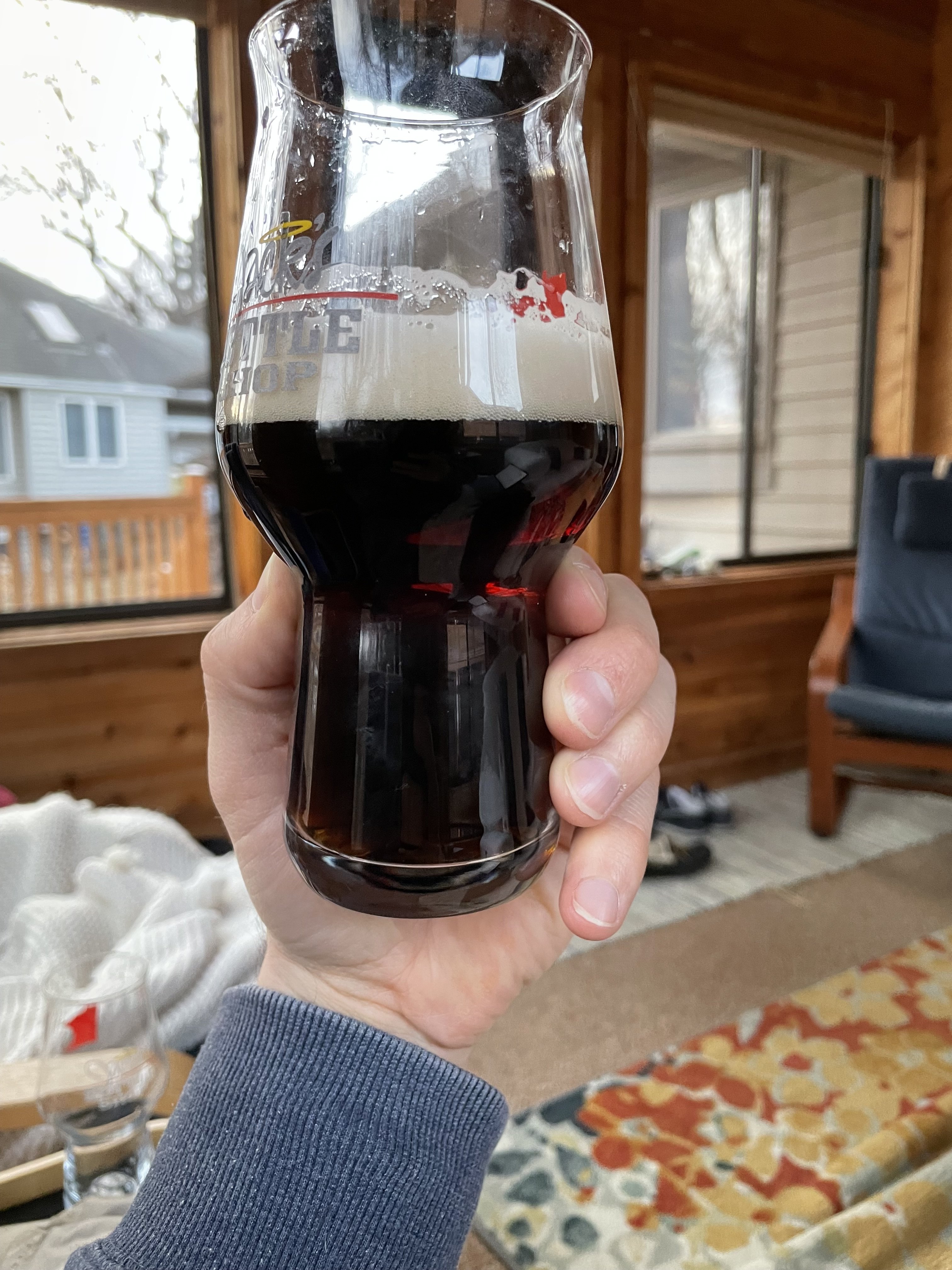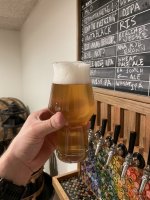duncan_disorderly
Well-Known Member
I ended up putting up a video about my attempt to make a No/Low ABV Hazy IPA:
Summary: The beer is not terrible but also not great. It looks great, and has a nice hoppy aroma, but the taste is overwhelmed by astringency. I am not 100% sure if this is just hop astringency. I used a lot of hops and I hit around 50% attenuation (vs the planned 15%), so there is little body and sweetness to back up the amount of hops used.
I am not sure what caused the extra attenuation. I have read that small amounts of residual brewers yeast can cause this. It is also possible that something like some wild yeast took hold. Normally pitching a healthy amount of yeast will outcompete other yeasts, but since LA-01 leaves behind lots of fermentable sugars, there is more room for other yeasts to take hold.
I do also detect a little phenolic character on the aroma and taste. LA-01 is reported to be POF+ but produces very little phenolic character. That could be another sign that a wild yeast helped out with the fermentation.
I would like to cycle back to brewing a No/Low ABV beer. I probably should have gone with my initial ideas to brew something like an English Mild or a lightly hopped Pale Ale style beer. I am curious about using a low attenuating yeast like Windsor or S-33 combined with a very high mash temp (around 170F).
Really enjoyed the video, thanks.
I've recently made a 1030 English Bitter using Lalbrew London yeast. ABV around 2.8%. It is not stellar but it's pretty good, I'm enjoying it. I will sharpen up the hopping next time. I used some rare Janus hops from an English hop yard, which are nice but I would like to get a sharper bitterness into the beer - I was a big fan of Boddington's Bitter before it was dumbed down, which was around 1035 OG and 32 IBUs. It was a "Wow, how do they do that?!" beer. I've not been able to replicate it but I've had some nice beers nonetheless.
Getting down below 1% is another matter entirely. I don't think I'll be trying unless someone can convince me of a straight forward method that produces good, reliable results. This yeast seems worth exploring. I guess if you are very low on malt then throwing in loads of hops will create a heavy imbalance. Boddingtons had a high attenuation yeast and FGs around 1004, which is counter intuitive. But it wasn't thin, for some reason I don't understand, and the dryness and bitterness made it highly drinkable. I'm going to continue making beers around 3% for now and see what I learn and where that takes me.











































![Craft A Brew - Safale BE-256 Yeast - Fermentis - Belgian Ale Dry Yeast - For Belgian & Strong Ales - Ingredients for Home Brewing - Beer Making Supplies - [3 Pack]](https://m.media-amazon.com/images/I/51bcKEwQmWL._SL500_.jpg)

















